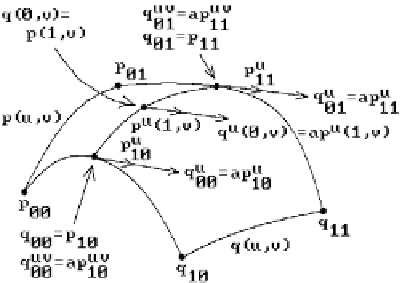Graphics Reference
In-Depth Information
Figure 12.27.
Making bicubic patches
meet smoothly.
for some constant a, are sufficient conditions for achieving C
1
continuity. These con-
ditions in fact imply that
∂
∂
q
u
va
p
u
∂
∂
(
)
=
()
[]
0
,
1
,
v
,
for all v in
0 1
, .
If our patches had met in a boundary curve in the u direction, say p(u,1) = q(u,0), the
analogous conditions would be
v
v
uv
uv
v
v
uv
uv
q
=
b
p
,
q
=
b
p
,
q
=
b
p
,
and
q
=
b
p
,
00
01
00
01
10
11
10
11
for some constant b. In the case of a network of patches, the condition for meeting
with C
1
continuity along the boundary curves translates into the fact that we have lost
quite a few degrees of freedom in defining the geometry of the surface. At each point
of the network where four patches meet, instead of having 48 degrees of freedom (each
of the four patches would have an arbitrary corner vertex, two tangent vectors, and
one twist vector) we only have 14 (one vertex, two tangent vectors, one twist vector,
and two constants). To put it another way, whereas the geometric matrices of a set of
mn independent patches would normally be defined by 16 mn vectors, given the
aforementioned constraints, a C
1
continuous patch network can be represented by
4(m + 1)(n + 1) vectors and m + n scalars, namely, by a four-vector grid,
p
ij
,
p
ij
,
p
ij
,
and
p
uv
ij
, and two sequences of scaling factors a
i
and b
j
. The geometric matrix of the
ijth patch would then have the form
i
v
v
p
p
p
b
b
b
p
Ê
ˆ
ij
i j
,
+
1
j
+
1
ij
,
+
1
Á
Á
Á
Á
˜
˜
˜
˜
11
11
v
v
p
p
p
p
i
+
1
,
j
i
+
1
,
j
+
1
j
+
1
i
+
1
,
j
i
++
11
,
j
.
u
u
uv
uv
p
p
p
p
j
+
1
ij
ij
,
+
1
ij
ij
,
+
1
u
u
uv
uv
Ë
a
p
a
p
a
p
a
b
j
p
¯
i
+
1
i
+
1
i
+
1
i
+++
++
i
+
1
,
j
i
++
11
,
j
i
+
1
,
j
i
,
j


